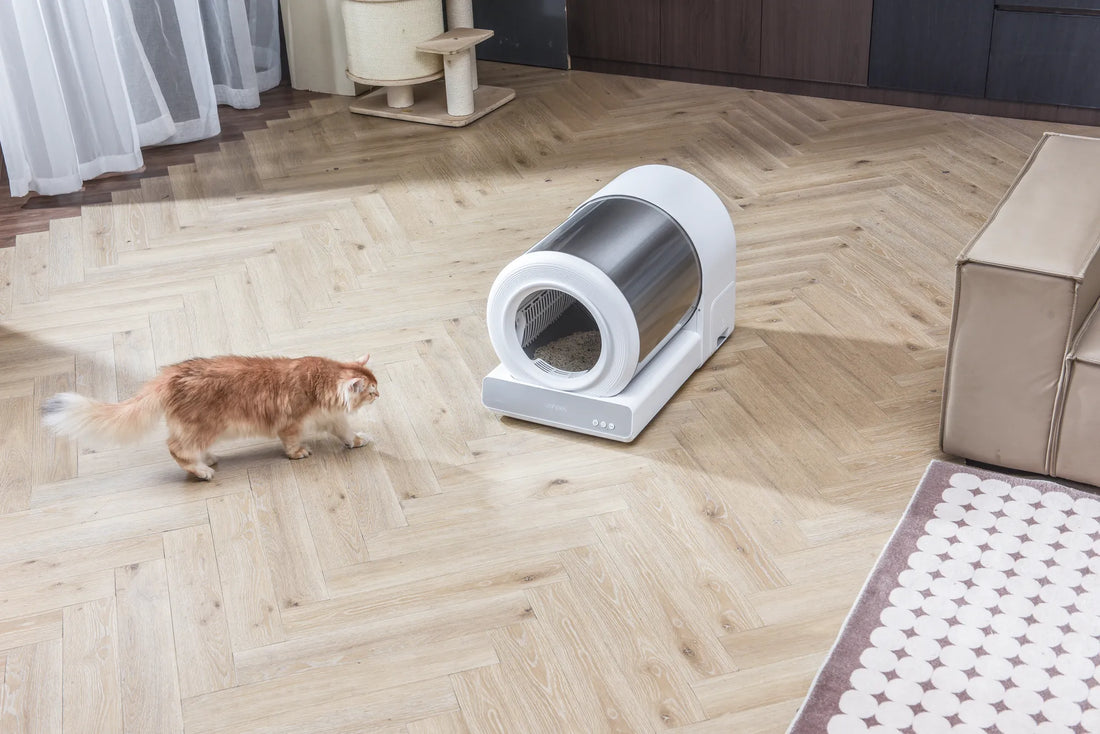If you've ever found yourself wondering why your cat is peeing in and out of the litter box, you're not alone. This behavior can be frustrating and confusing for pet owners, but understanding the underlying causes is the first step toward finding a solution. Cats are creatures of habit, and any deviation from their normal routine can be a sign that something is amiss. In this article, we'll explore the various reasons why your cat might be peeing outside the litter box and provide practical tips to help you address the issue.
Understanding the Basics of Cat Behavior
Cats are naturally clean animals, and they typically prefer to use a litter box for their bathroom needs. However, there are times when a cat may start peeing outside the litter box, and this can be a sign of stress, illness, or other underlying issues. It's important to observe your cat's behavior closely and look for any changes that might indicate a problem. Some cats may start peeing outside the litter box due to a medical condition, while others may do so because of environmental factors or stress.
Medical Causes of Inappropriate Urination
One of the first things to consider when your cat starts peeing outside the litter box is whether there might be a medical issue at play. Cats can develop urinary tract infections, bladder stones, or other conditions that make it painful or difficult for them to urinate. If your cat is experiencing pain while urinating, they may associate the litter box with discomfort and start avoiding it. In some cases, cats may also develop diabetes or kidney disease, which can lead to increased urination and accidents outside the litter box. If you suspect that your cat's behavior is due to a medical issue, it's important to consult with a veterinarian as soon as possible.
Stress and Anxiety in Cats
Stress and anxiety can also lead to inappropriate urination in cats. Cats are sensitive animals, and changes in their environment or routine can cause them to feel anxious or stressed. Common stressors for cats include moving to a new home, the addition of a new pet or family member, or changes in their daily routine. When a cat is stressed, they may start peeing outside the litter box as a way of marking their territory or expressing their discomfort. It's important to identify the source of your cat's stress and take steps to help them feel more secure and comfortable in their environment.
Litter Box Issues
Sometimes, the problem may lie with the litter box itself. Cats can be very particular about their litter box preferences, and if the box is not to their liking, they may start avoiding it. Common litter box issues include a box that is too small, a litter that is too deep or too shallow, or a box that is not cleaned frequently enough. Cats may also avoid a litter box that is located in a noisy or high-traffic area. To address these issues, make sure that your cat's litter box is clean, comfortable, and located in a quiet, accessible location. You may also want to experiment with different types of litter to see which one your cat prefers.
Territorial Marking
In some cases, a cat may start peeing outside the litter box as a form of territorial marking. This behavior is more common in unneutered male cats, but it can also occur in neutered males and females. Cats may mark their territory by spraying urine on vertical surfaces, such as walls or furniture, or by urinating in specific areas of the home. Territorial marking is often triggered by the presence of other cats or animals in the home, or by changes in the household that make the cat feel insecure. To address this behavior, it's important to identify the triggers and take steps to reduce your cat's stress and anxiety. Neutering or spaying your cat can also help reduce territorial marking.
Addressing the Issue: Practical Tips
If your cat is peeing outside the litter box, there are several steps you can take to address the issue. First, rule out any medical causes by consulting with a veterinarian. Once you've determined that your cat's behavior is not due to a medical issue, consider whether stress or anxiety might be a factor. Take steps to reduce your cat's stress by providing a secure and comfortable environment, and try to identify and eliminate any potential stressors. Make sure that your cat's litter box is clean, comfortable, and located in a quiet, accessible area. You may also want to experiment with different types of litter to see which one your cat prefers. If your cat is marking their territory, consider neutering or spaying them, and take steps to reduce their stress and anxiety.
When to Seek Professional Help
If you've tried all of the above solutions and your cat is still peeing outside the litter box, it may be time to seek professional help. A veterinarian or a feline behaviorist can help you identify the underlying cause of your cat's behavior and provide guidance on how to address it. In some cases, medication or behavioral therapy may be necessary to help your cat overcome their issues. Remember, every cat is different, and what works for one cat may not work for another. It's important to be patient and persistent as you work to resolve the issue.
Dealing with a cat that is peeing in and out of the litter box can be challenging, but with the right approach, you can help your feline friend get back on track. By understanding the underlying causes of this behavior and taking steps to address them, you can create a more comfortable and stress-free environment for your cat. Don't hesitate to seek professional help if needed, and remember that patience and persistence are key. Your cat will thank you for it!













